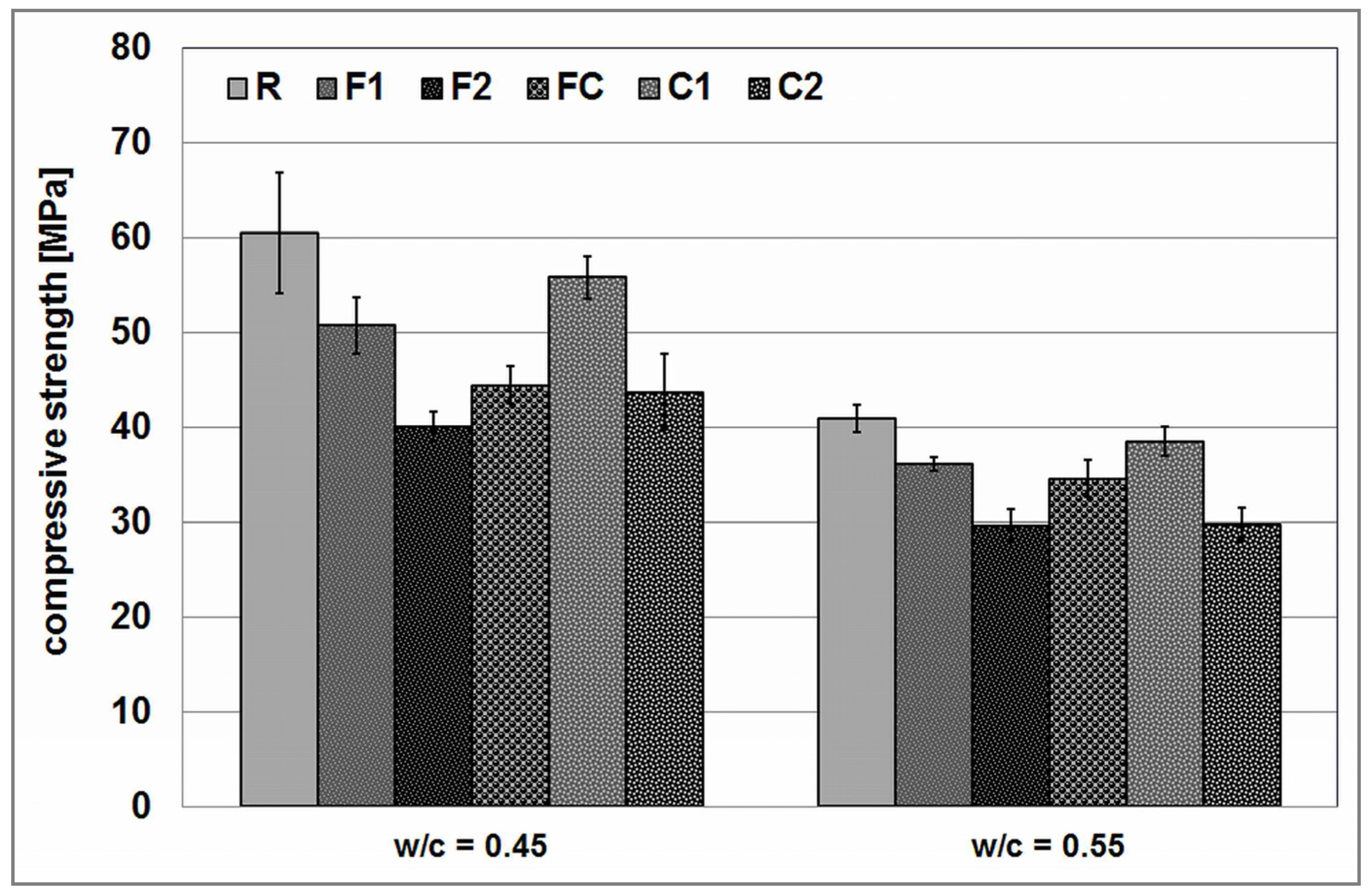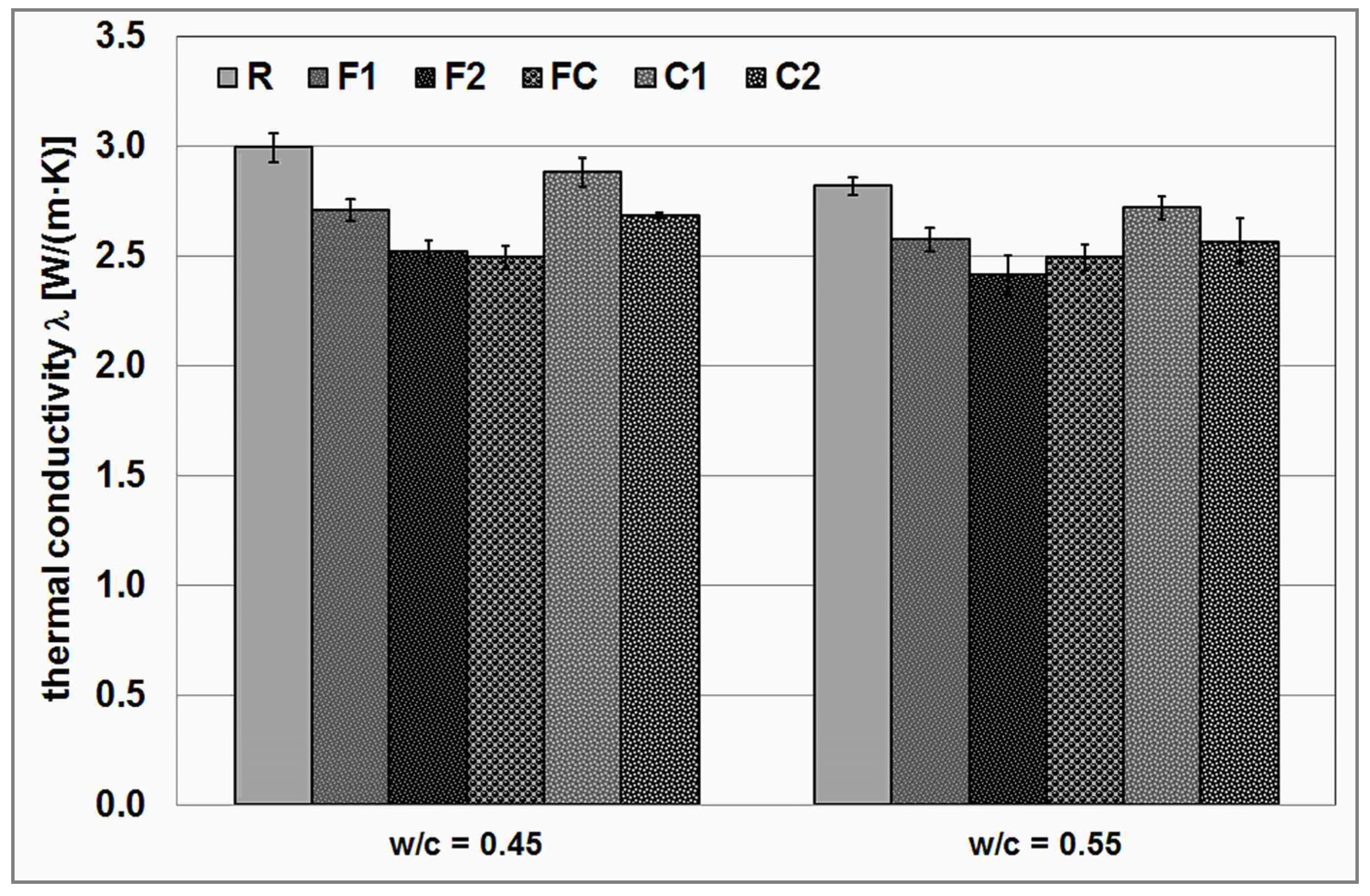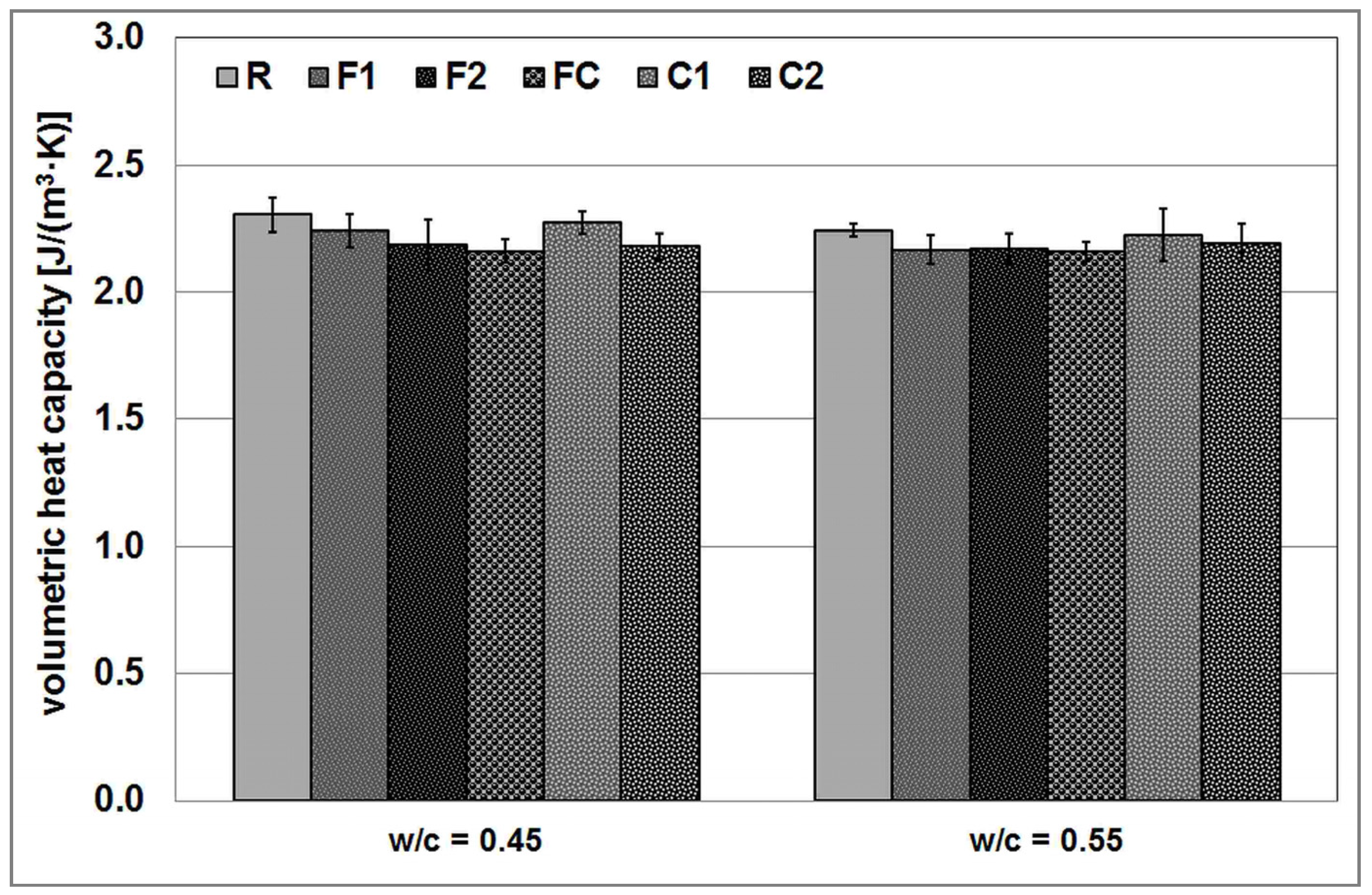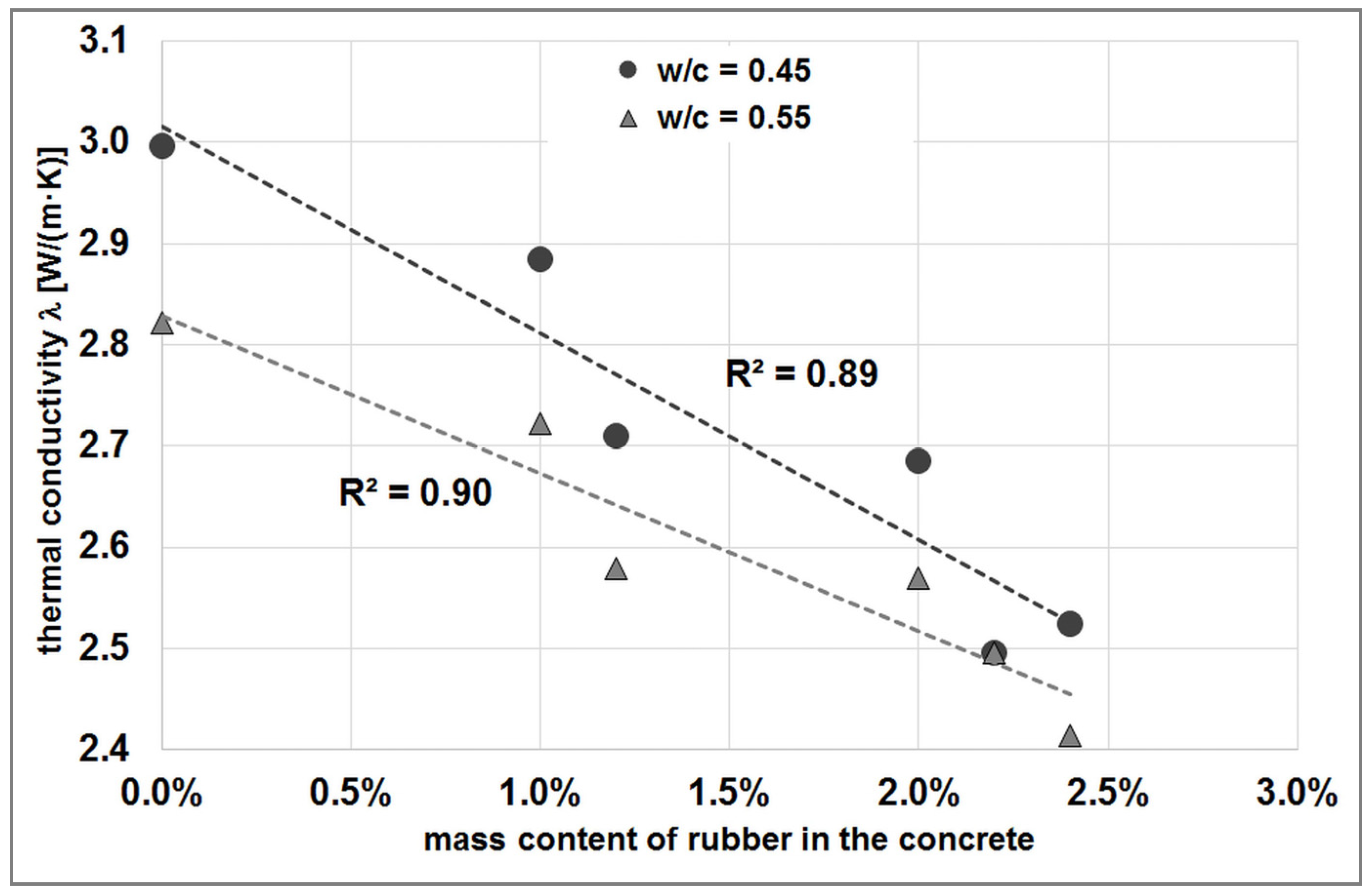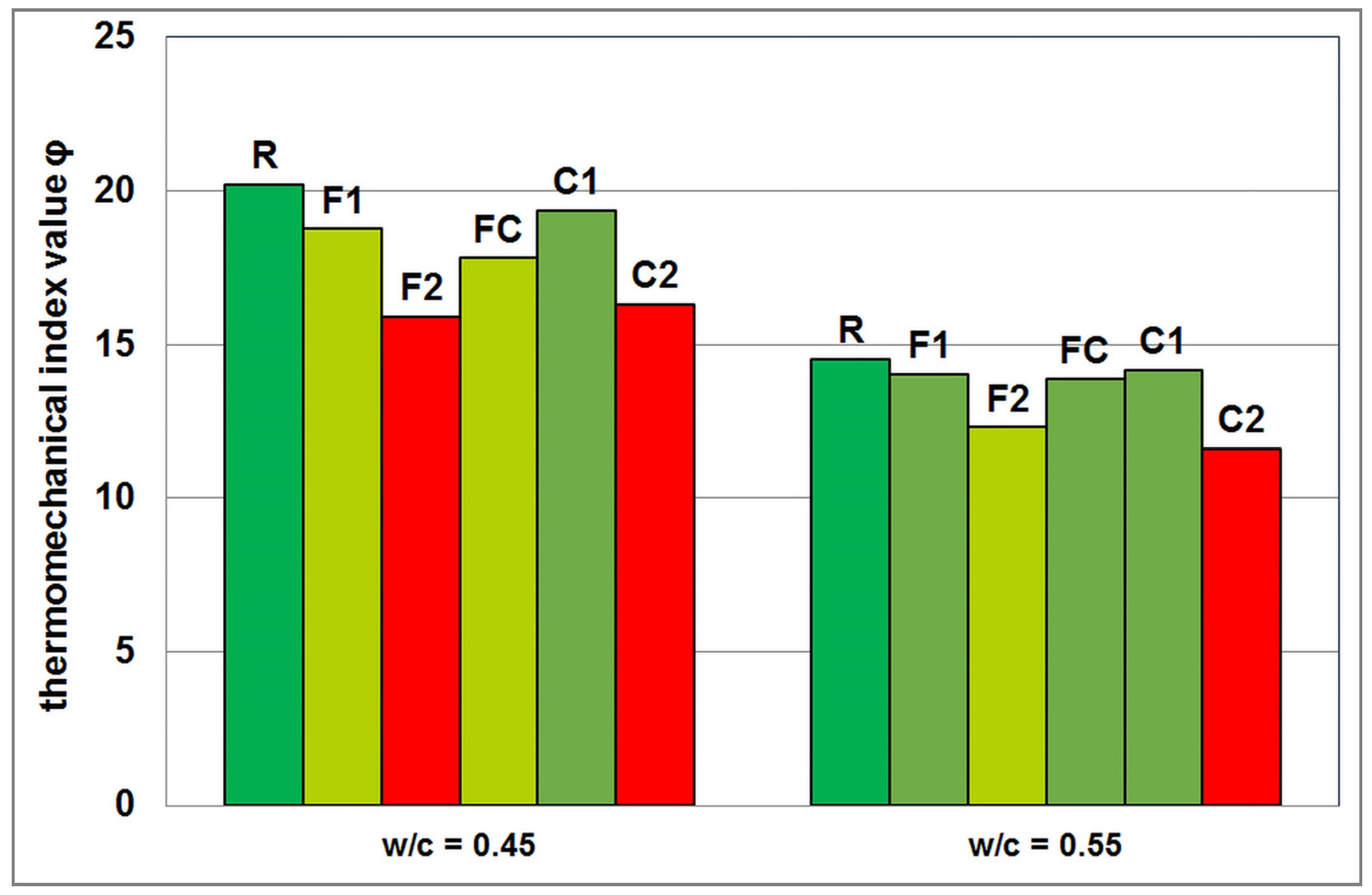1. Introduction
Waste car tyres are a troublesome waste, as evidenced, among other things, by the numerous landfills where this waste is dumped, despite the many opportunities for reuse. Among other things, they are used as a highly calorific alternative fuel in cement plants [
1,
2,
3,
4] and, after shredding, also for other uses.
In order to recycle waste rubber tyres, they are usually subjected to various types of treatment. Most commonly, they are shredded by grinding. Various techniques are used for this, including wet milling and cryogenic grinding. The resulting material, ground tire rubber (GTR), is used, among other things, as a substitute for some of the raw materials used in rubber production [
5,
6]. The ground rubber can additionally be devulcanized. Micro-particles of devulcanized rubber, but also rubber not subjected to such treatment, are used in the production of acrylonitrile butadiene styrene copolymer (ABS) and thermoplastic polyolefins (TPO), which in turn are the basis for the production of materials used in 3D printing [
7].
Another way of processing waste tyres is pyrolysis, which offers numerous possibilities for processing tyres and subsequently using the resulting products in various ways. In pyrolysis, the material is subjected to temperatures in the range of 300–900 °C without oxygen. The result is char, liquid hydrocarbon fractions and gases, which can then be combusted for energy [
1,
5,
8].
One of the most common uses of recycled tyre rubber in the construction industry is in the building of asphalt pavements. Such an additive to asphalt concrete improves the performance of the pavement, as well as reduces its cost. Improved performance means, among other things, reduced permanent deformation of flexible pavements and increased resistance to rutting and fatigue damage. On the other hand, cost reduction includes not only pavement construction, but also the subsequent cost of maintenance [
9,
10].
A different application option being explored for tyre rubber waste is its use in concrete production. This use of such waste is part of a wider trend of using waste materials in concrete technology. The primary motivation for most concrete studies that use waste materials is to reduce the consumption of natural raw materials by partially or completely replacing them with waste materials. This most often applies to aggregates. A parallel or alternative motivation is the need to reduce pressure on the environment by reducing landfill through waste reuse. The situation is no different in the case of waste tyres. In addition, the use of waste crumb rubber in concrete technology produces a material with more favourable thermal properties, which can contribute to lower energy consumption. These three reasons for undertaking research on concrete containing waste crumb rubber are directly in line with the idea of sustainability and sustainable construction.
Concrete with rubber waste has been studied for about 30 years [
11,
12]. Studies include both the properties of the fresh concrete mixture: flowability, viscosity, passing ability and segregation resistance in the case of SCC [
13], workability [
14,
15], as well as various properties of the hardened concrete. The latter include strength characteristics: compressive strength, flexural strength, splitting tensile strength, modulus of elasticity, ultrasonic pulse velocity [
13,
14,
16,
17], dynamic flexural moduli [
16], and durability characteristics: water absorption, water sorptivity, fatigue behaviour [
13], chloride ions penetration resistance based on electrical resistivity (AASHTO TP 95) and charge passed (ASTM C1202) [
14], porosity, wettability—water contact angles (WCAs) test—sorptivity [
18], freezing–thawing resistance, and sulphate corrosion resistance [
17], as well as other, less frequently studied characteristics, such as electrical resistivity, vibration damping [
16], impact resistance, shrinkage, fracture energy [
13] or printability test [
18].
Rubber waste in concrete is usually used as a replacement for part of the fine or coarse aggregate or both aggregate fractions at the same time. In the case of the former, the replacement may involve up to 100% of the aggregate used. Since aggregate makes up most of the volume in concrete, even its partial replacement with rubber waste significantly affects the properties of the material. Above all, it lowers its compressive and tensile strength [
19], which is due, among other things, to the large difference in the elastic modulus of the rubber in relation to the remaining aggregate and the concrete matrix. A rubber particle due to its much higher elasticity behaves to some extent like a void in relation to the much stiffer concrete matrix, leading to local stress concentrations. Another reason pointed out by researchers is the deterioration of the interfacial transition zone (ITZ) situated between the aggregate and the concrete matrix by increasing its porosity [
20]. This is a direct result of the hydrophobic properties of the rubber. This decrease in strength can be partly prevented by the use of dispersed reinforcement [
19].
As a result of replacing the natural aggregate with crumb rubber waste, the density of the concrete is also reduced due to the low specific density of the rubber being around 0.9 kg/dm3 with the density of the natural aggregate being usually in the range of 2.5–2.7 kg/dm3. The reduction in density is also to a small extent the result of an increase in the porosity of the material, which in turn is mainly due to a deterioration in the workability of the concrete mix. A decrease in the density of concrete does not necessarily imply a reduction in the usefulness of the concrete, as long as its strength remains at the level required for specific applications.
Lower density usually goes hand in hand with lower thermal conductivity, and this effect is enhanced when using waste materials with a higher thermal resistance than natural aggregate. The higher thermal resistance is usually due to the amorphous nature of these materials. This applies to crumb rubber, as well as some mineral wastes such as copper slag waste [
21].
The lower thermal conductivity of concrete with waste rubber is quite well documented in the literature [
20,
22,
23], but areas of application are still being sought where the use of concrete with part of the aggregate replaced by waste rubber is advantageous due to its better properties. Among other things, rubber has a high vibration damping capacity, hence it is widely used for this purpose. Additionally, concrete made from waste crumb rubber has, in other words, a higher damping coefficient [
19,
24]. This indicates that elements made from such concrete can be used for building partitions with improved sound insulation.
The compressive strength of concrete made using various waste materials in most cases decreases. This decrease can sometimes be as much as 50% in relation to reference concrete without the waste material [
25]. Concrete with crumb rubber is one example. At the same time, the preservation of concrete strength or even an increase in it is a condition for considering a given concrete modification as acceptable or even worthy of study (without the prospect of its application, but in order to increase knowledge), irrespective of its potential possible uses other than as a material for heavily loaded structures. For this reason, along with the use of waste materials that reduce the strength of concrete, solutions are sought to limit this loss of strength. For example, additional dispersed reinforcement is used for this purpose. Alternatively, the amount of waste material is limited to such quantities that the strength loss of the concrete is slight. This sometimes has the consequence that the proportion of waste material used becomes so small that the benefits of a natural resource saving, or waste management become questionable. Thus, the peculiar reluctance to “spoil” concrete resulting from the excessive weight given to the preservation of one of its parameters severely limits the creative modification of this material with a view to improving its other properties (thermal, acoustic, etc.).
However, despite the sometimes significant reduction in concrete strength, it is still sufficient for many applications, including structural engineering. Therefore, when analysing the properties of concrete in which waste materials have been used, resulting in a reduction in the strength of the material, it is necessary to assess the concrete holistically, considering the potential applications of the material thus obtained. Yes, the strength characteristics are sufficiently important that they should not be overlooked in the assessment, but they should also not be given undue weight.
For many decades, the strength characteristics of concrete were almost the only ones subject to standardisation and specific requirements, and in addition to these, in specific situations, certain durability characteristics were added, but these were usually treated as secondary. It took several decades for the durability characteristics of concrete to take on equal importance with the strength characteristics, and this process is still ongoing. Meanwhile, it is the durability properties of concrete that determine how long a structure will retain the required load-bearing capacity. Another change in the analysis and evaluation of concrete characteristics should be the emancipation of those parameters that determine its environmental friendliness. Here, thermal parameters, among others, come to the fore. Thus, the aforementioned holistic evaluation of concrete using waste materials should be based on answering the questions: for which applications do the strength characteristics of the concrete predestine it? Do the durability parameters ensure that the former are maintained at a satisfactory level during the life of the structure? Does concrete made using certain waste materials show characteristics that allow it to be considered a more environmentally friendly material?
The approach postulated above for the investigation of concrete with waste materials has been largely followed in this work. Only the study of durability characteristics has been omitted, but not because it was considered irrelevant, but because it was the authors’ intention to present the effect of the addition of rubber waste on the thermal properties of concrete and the extent to which they change as a function of the mass proportion of waste material used and the degree of fineness. Changes in strength properties were also analysed using concrete with different w/c ratios as an example.
In order to study the influence of the amount of crumb rubber in the concrete and the effect of the fraction size of the waste material used, a total of twelve series of concrete were made. Two values of the w/c ratio were adopted in the concrete mix formulations. Four fractions of crumb rubber were used, divided into two groups conventionally referred to as “fine” and “coarse” crumb rubber. Compressive strength and thermal property tests were carried out on each series of concrete. The hot plate method was used to measure the thermal conductivity and volumetric heat capacity of the resulting material when fully saturated with water. Once the density of the concrete was determined, its specific heat was also calculated. In contrast to most studies on concrete with crumb rubber, the amount of waste material used was expressed as a percentage of the weight of the concrete mixture, rather than as a percentage of the weight of the cement or aggregates replaced. The content of fine and coarse fractions of waste crumb rubber was also differentiated to a small extent, so that in cases where the particle size has a negligible effect on the relations obtained, it could be presented in a clearer way.
4. Discussion
The strength characteristics of concrete are influenced by numerous factors, ranging from the number and type of ingredients, their type, quality, and mutual proportions, to the method of mix preparation and compaction, to the curing conditions. For this reason, the discussion of the results obtained has been limited to a comparison of the series examined within the framework of the presented research, without comparing the strength values obtained with the results contained in numerous publications devoted to this feature of crumb rubber concrete. This is also a consequence of the paradigm adopted, in which the preservation of the compressive strength of concrete is not a key issue, but neither is the parameter, which is omitted from consideration. The condition to be fulfilled with regard to compressive strength is only that its value should be maintained at a level that allows the anticipated use of the material.
The strength of the reference concrete was 60.6 and 41.0 MPa for the 4R and 5R series, respectively. The concrete with crumb rubber achieved strengths in the range from 40.1 to 55.9 MPa for the series with w/c = 0.45. The strength of the concrete series with w/c = 0.55 was in the range 29.7–38.5 MPa. This means that the difference between the maximum strength and the minimum strength is equal to 15.8 MPa for the crumb rubber concrete with the lower w/c ratio and 8.8 MPa for the concrete with w/c = 0.55.
The highest strength in each group of series with different w/c values was achieved by the series of concrete with the addition of coarse crumb rubber at 1%, namely series 4C1 and 5C1. This was followed by the series with 1.2% fine crumb rubber—series 4F1 and 5F1. The lowest strength values were recorded for the 4F2 and 5C2 series, while it should be added here that the 5F2 series had only 0.1 MPa higher strength than the 5C2 series, so it is reasonable to conclude that the strength was largely determined by the crumb rubber content. The correlation between the two parameters, divided into two groups of concrete series with identical w/c values, is presented in
Figure 4. The reference concrete is also included there.
Based on the trend line and the value of the coefficient of determination R
2, the Pearson correlation coefficients can be calculated as r = −0.98 (when w/c = 0.45) and r = −0.90 (when w/c = 0.55). This indicates a high negative correlation. A similarly high correlation exists between the density of the concrete and its compressive strength, as can be seen in
Figure 5. In this case, the correlation is positive, and the correlation coefficient values are more closely aligned with r = 0.95 and r = 0.94 for concrete with w/c = 0.45 and w/c = 0.55, respectively.
The results of the concrete thermal conductivity test illustrated earlier in
Figure 2 are juxtaposed with the mass proportion of crumb rubber in the concrete. As can be seen from the juxtaposition shown in
Figure 6, there is a strong negative correlation between the two parameters at r = −0.94 and r = −0.95, and the relationship between the two parameters can be considered linear over the range tested.
The influence of the size of the crumb rubber particles on the thermal conductivity coefficient can also be assessed indirectly in this figure. The results obtained for the series containing coarse crumb rubber (i.e., those with a mass share of 1% and 2%) are clearly above the defined trend line, while the series using only fine crumb rubber (mass share of 1.2 and 2.4%) are characterised by values below or, in one case, on this line. It can be concluded from this that the thermal conductivity coefficient of concrete with coarse crumb rubber is at a higher level than that of concrete with fine crumb rubber at the same mass proportion.
This is a different conclusion from that of Fadiel et al. [
23], which was based on their test results, but these results cannot be directly compared as they were obtained in tests on mortar that contained crumb rubber in an amount of 7–27% the weight of mortar. In addition, the thermal conductivity values obtained were about five times smaller, and the size of crumb rubber particles was 0–0.6 mm and 0.84–2.00 mm, approximately, corresponding to the sizes used in the concrete with fine crumb rubber in this study. These discrepancies in the obtained trends in the change of thermal conductivity coefficient indicate that the effect of the size of crumb rubber particles on the thermal conductivity of the cement composite may vary, and this should be further investigated.
The correlation between the density of crumb rubber concrete and its thermal conductivity was also investigated and is illustrated in
Figure 7, which shows the linear trend lines for both the concrete series with different w/c values separately, as well as collectively for all the series made. In all cases, the correlation is positive and very strong. In the case of the series with w/c = 0.45, the correlation coefficient is r = 0.98, the series with w/c = 0.55 is characterised by a correlation coefficient value of r = 0.97, and a correlation coefficient of r = 0.96 was obtained when all concrete series were considered.
The volumetric heat capacity exhibits a slight decrease in value with an increase in the proportion of crumb rubber, as can be seen in the results obtained for concrete with a w/c ratio = 0.45. This trend is in line with the results obtained by Záleská et al. [
33]. It is due to the lower value of volumetric heat capacity of crumb rubber compared to that of natural aggregate. This effect is somewhat smaller than would be expected from the difference in this parameter for the two materials, because the decreasing volumetric heat capacity of crumb rubber is partly compensated for by the greater porosity of the material and, therefore, the greater amount of water.
In the case of concrete with w/c = 0.55, the negligible effect of crumb rubber on the value of volumetric heat capacity is most likely due to the greater variation in porosity of the material from series to series. The pore-filling water in concrete has approximately forty times the volumetric heat capacity of rubber, hence even small variations in the water content of concrete have a much greater effect on the measurement of this quantity for a material with significant porosity.
Adopting the paradigm of the equal importance of concrete’s strength characteristics and other performance characteristics complicates the assessment of the material’s functionality. This is particularly the case when a change in the composition of the concrete mixture translates into favourable changes in some of the concrete’s characteristics and worsens other parameters. Formalised assessment methods can be used in such a situation, e.g., the EIPI method [
34,
35], which additionally allows the ecological performance of the material to be assessed. However, in simple cases where only two parameters form the basis of the assessment, one can limit oneself to defining an index combining the two.
This is the case with the material being evaluated, where one parameter changes in a favourable direction and the other in an unfavourable direction as the proportion of crumb rubber increases. Since the values of both parameters decrease at the same time, an index that is a quotient of the concrete’s compressive strength and thermal conductivity coefficient will prove useful in this situation. For the purposes of this study, this was referred to as the thermomechanical index φ and was calculated according to Formula (2),
where φ is the thermomechanical index, f
c is compressive strength, and λ is the coefficient of thermal conductivity. The results of thermomechanical index calculations are presented in
Figure 8. As this index does not make physical sense, but only for practical use, both in the figure and in the discussion of results, its unit has been omitted. The practical sense of calculating this index in a situation where a requirement for a minimum value of concrete strength is imposed is limited to the situation where this requirement is fulfilled.
The reference value of the φ index was assumed to be its highest value at a given w/c value. Values lower by no more than 5% were considered to be of equal quality, and values lower by no more than 15% were considered to be “good enough”. The analysis of the thermomechanical index values obtained allows for the conclusion that the use of crumb rubber in concrete in an amount of up to 2.2% of the mass of the material for a concrete series with w/c = 0.55 leads to φ index values of up to 15% lower than the maximum value. Four equivalent concrete series can be identified among these: 5R, 5F1, 5FC, and 5C1, and one “good enough”, namely F2. Only the C2 series, with a crumb rubber content of 2.4%, falls outside the specified range.
The results for the concrete series with w/c = 0.45 are considerably more varied and allow dividing them into three groups: 4R and 4C1 as equivalent series, 4F1 and 4FC as “good enough”, and 4C2 and 4F2, where the index value was more than 15% below the maximum value among these series. It is worth noting that the crumb rubber content of the 4C2 series is 2.0%, while that of the 4FC series, which has a much better thermomechanical index value, is 2.4%. This indicates that it is not only the amount of crumb rubber that shapes the ratio value. This division is, of course, subjective and conventional. The adoption of other limit values or other criteria may result in a different classification.
5. Conclusions
The use of crumb rubber from waste tyres as a substitute for part of the aggregate did not cause technological difficulties in the preparation of the concrete mixture and the compaction of the specimens. Some recipe modifications were needed due to the strongly different density and water demand of the waste rubber compared to the natural aggregate.
A strong negative correlation was observed between the compressive strength of the concrete and the amount of crumb rubber in the concrete. At the same time, the insulating capacity of the material increased, and the thermal conductivity coefficient also showed a strong negative correlation with the amount of crumb rubber in the concrete. For both parameters tested, their dependence on the amount of crumb rubber in the concrete is linear in the range of dosage used (0 to 2.4 wt.%). The density dependencies of compressive strength and thermal conductivity are also linear in this range.
A thermomechanical index was introduced to simultaneously evaluate the performance of the concrete on the basis of compressive strength and thermal conductivity, the value of which, in most cases, decreased by less than 15% in concrete with waste rubber compared to the results of the reference series. Such a decrease was taken as the limiting acceptable value and was only exceeded in the case of a coarse crumb rubber content of 2.0% and a fine crumb rubber content of 2.4%, but in the latter case only in the series with w/c = 0.45.
The volumetric heat capacity in the series with w/c = 0.45 is characterised by a slight decrease in value as the proportion of crumb rubber increases. This is due to the lower value of volumetric heat capacity of crumb rubber compared to that of natural aggregate. For concrete with w/c = 0.55, the effect of crumb rubber on the value of volumetric heat capacity was negligible.
Despite the deterioration in the summarised performance, it must be concluded that the compressive strength of concrete, even with maximum used crumb rubber content (2.4% of total mass of concrete mix), is sufficient for many applications and the improvement in insulating capacity is large enough that the use of such a material can be beneficial in many cases.
